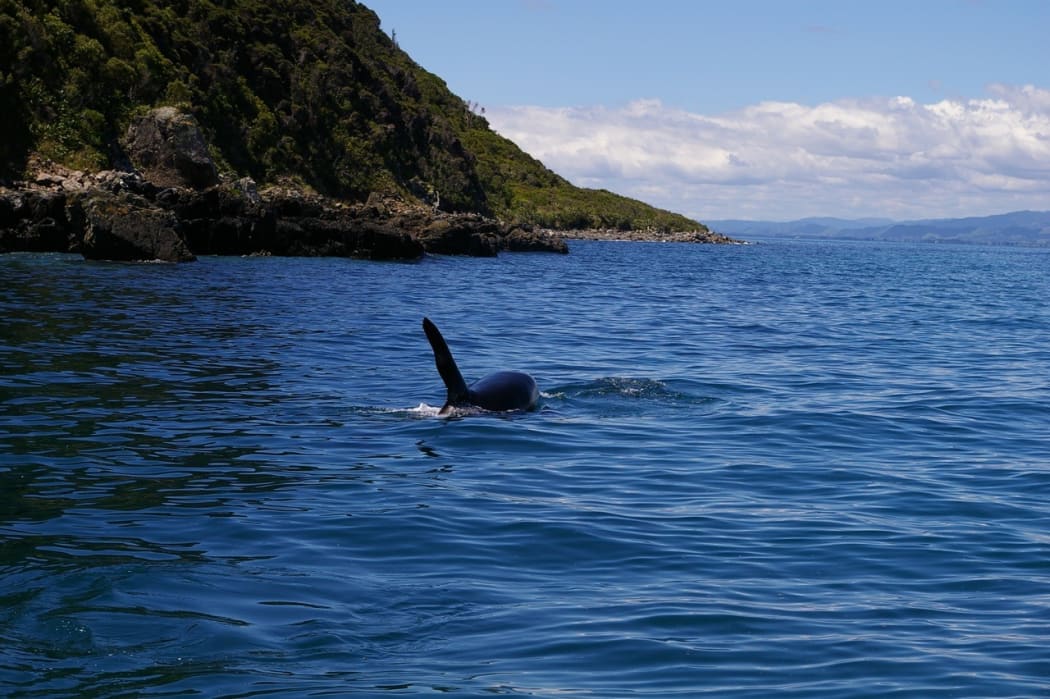A community on the North Island's west coast is battling against proposals to ramp up snapper fishing in the area.

File photo. Photo: Supplied: Department of Conservation
Following a complete depletion of snapper in the area at the beginning of the millennium, stock levels have rejuvenated, and now MPI wants to increase catch by as much as 133 percent.
But people living on the Kāpiti Coast - including fishers, mana whenua, scientists and environmentalists - fear the proposals could cause huge damage to fish stocks and the environment.
The area, north of Wellington, is home to the Kāpiti Marine Reserve: 2,167 hectares of pristine, unique and in some places undisturbed marine environment.
Under the waves are blue cod, hermit crabs, finger sponge, kelp, jewel anemone, and rhedolith.
"Kāpiti Marine Reserve is like an oasis: it's the hidden jewel in the Kāpiti Island crown," Guardians of Kapiti Marine Reserve chairman Ben Knight said.
"It protects a really diverse range of actually very fragile and very biogenic habitats, habitats that support a lot of life, and that provide shelter [and] refuge for juvenile aggregations of species, so blue cod, snapper, that kind of thing."
The community group is concerned about the potential damage increased fishing could do to the habitats, and wants the establishment of a wider, no-trawling buffer zone surrounding and protecting the reserve.
The recovery
Less than 20 years ago, the snapper population on the North Island's west coast - a management area known as Snapper 8 - was in dire straits.
Snapper 8, which extends from Cape Reinga in the north to just below the Kāpiti Coast in the south, is the second largest of the six different catchment areas.

Snapper Quota Management Areas Photo: MPI/Vinay Ranchhod
But decades of intensive fishing of the species left stocks at just 8 percent of what it would be if there was no fishing.
"Locals here really noticed that," Knight said.
"We went from having an abundant local fishery, where people could go out and catch snapper efficiently, to not being able to catch snapper, they were virtually gone from the area.
"The marine reserve proposal was about protecting the really high-value biogenic habitats that we have out here around the island, and it was about rebuilding the stocks over an extended period of time."
Authorities also put stronger limits on how the Total Allowable Catch (TAC) commercial and recreational fishers could take.
It led to a rejuvenation of the snapper population: numbers have swelled, and the latest assessment showed stock levels have risen to 54 percent.
Consequently, the Ministry for Primary Industries has proposed to increase the TAC significantly. Currently, that limit is set to 1,785 tonnes.
Four different options range between increasing the current TAC by at least 72 percent, and as much as 133 percent.

Snapper Total Allowable Catch proposed options Photo: MPI/Vinay Ranchhod
'Knee-jerk reaction'
There has been concern from recreational fishers that snapper populations on the west coast would suffer again if the proposals went ahead.
For the community on the Kāpiti Coast, they are aghast at the numbers.
Professor of Marine Biology at Victoria University, Jonathan Gardner, and trustee for the Guardians, said increasing fishing will impact the reserve itself.
"One of the things we found from data at Taputeranga [Marine Reserve] in Cook Strait is, 20 years ago, inside the marine reserve, we had twice as many [fish] as outside.
"Twenty years on, the last monitoring we did, that ratio is still true: twice as many whatever - blue cod, butterfly fish - inside as outside. But the numbers [overall] have come down.
"So this fishing pressure, although it may not be in the reserve itself, is taking fish out of the reserve generally because fish move around and they don't recognise the boundaries."
Members of the Guardians urged the Ministry for Primary Industry to be patient when deciding what to do.
"As soon as the stocks go up, really you need a bit of time to ascertain, are those stocks going to stay up, or is it a seasonable thing, or changing environments?" said Karl Webber, of Ngāti Toa, Te Āti Awa, and Ngāti Raukawa.
Webber has a home on Tahoramaurea Island, on the southeastern side of Kāpiti Island.
"It's a bit of a knee-jerk reaction. From my perspective, it's leaning more towards commercial rather than ecological and recreational and the cultural values.
"Iwi don't have much say, and I think we should do."
'A range of views'
There are also local fishers who are worried that they could see their own catch dry up if trawlers become more active.
Charter fisherman Neil Peyferman said it has happened in the past.
"There was a while when there seemed to be a fair few boats working the area. There must have been some boats from outside of the area working, and they seemed to have an impact on the tarakihi stocks quite heavily.
"They'd all be working the same area, so we could see what was happening."
He said he is worried, if catch allowances for snapper goes up, the same thing would happen.
"We don't want to be going out to our good snapper spots and just catching a couple of fish - that's what could happen: area depletion.
"If there's some bad weather and all the boats are congregating around here, they could clean the whole area out, quite easily."
In its proposal document, MPI said under all options within 5 years, fish stocks are maintained at around 57 percent. That well exceeds the management target of just 40 percent.
At the end of 10 years, however, the projections do estimate that the biomass will decline to some degree.
"People are passionate about our fisheries, so naturally there will be a range of views from across all interests," said Emma Taylor, the Director of Fisheries Management at Fisheries New Zealand.
"We are now working through the feedback to provide advice to the Minister for Oceans and Fisheries for his consideration.
"Any changes will come into effect at the beginning of the fishing year for 1 October."
For the Guardians, the idea of more fishing is not just about the stocks, but also about the damage trawlers could do to the habitats which surround Kāpiti Island, not just the reserve.
"It's like a grater going through a paddock," is how Webber described it.
Professor Jonathan Gardner of Te Herenga Waka, Victoria University of Wellington, is in the process of mapping the 25,000 hectares of seabed which surround the island, and has estimated there could be up to 18 different habitats.
Trawlers - if dragging nets along the sea - could completely decimate them.
"We know that there are black coral colonies there," Gardner said. "Black coral is an animal, it takes a tree-like form.
"They're very fragile, [if] anbody runs a dredge through those, they're gone. They may be two, three, four hundred years old, we don't know.
"Some of them quite big, and as soon as they're hit and damaged, that's it, they're lost."
The other impact is the knock-on effect that could have on the food chain, if taking top-end predators out of the ecosystem then the trickle-down effect that could have.
To protect not just the marine reserve but the entire area around the island, the Guardians are calling on the establishment of a recreational marine park.
"We could have a commercial-free zone out here, where we can license local fishers. We've got some small local operators that fish here, and they're very sustainable, and we see their fish in our shops here."
Such an arrangement used to exist as a "no-trawler buffer zone", but was always an informal agreement when the reserve was established thirty years ago.
But that has fallen by the wayside. The Guardians say trawlers now come right up to the boundary of the reserve, which they are legally allowed to do.
The establishment of a recreation marine park - extending south down to Pukerua Bay, and from the north up to Ōtaki - would stop that.


